
Why is Saigon called "the pearl of the Far East"?
- on Dec 22, 2019 By: Ngoc Nguyen
When you arrive in Ho Chi Minh City, you will be struck by the hustle and bustle that reigns there. As the economic capital of the country with a cosmopolitan population, the ex-Saigon despite its full transformation is one of the obligatory passages of the country for its exceptional mixture of tradition and modernity.
History of "the pearl of the Far East"
From 1895, a town surrounded by the jungle that was Saigon, also called "Prei Nokor", under the control of the French, had systematically undergone significant changes, giving it a whole new physiognomy. Saigon in colonial times looked a bit like a French city, becoming the capital of Indochina in terms of economy and entertainment, competing with Singapore of the British colonists. It was also during this period that a memorable page from Saigon was written, including so many fascinating exotic flavours.
Urban development work has followed at an unprecedented rate and size compared to other cities in the region. In the central part of the city numerous works impregnated with the French style were born which still remain to this day. They are beautiful architectural pieces such as the Notre-Dame cathedral, the Saigon Opera House and the Palace of Independence (palace of the general government of Cochinchina).
Catinat Street (present-day Dong Khoi Street) was considered the showcase of Saigon, where entertainment, hotels and restaurants were concentrated to go hand in hand with the needs of the colonialist community and the local bourgeois inhabitants.
Along the Lon (Grand) canal, present-day Nguyen Hue and Xang canal, present-day Ham Nghi, there were lively markets to trade on the banks of the Saigon River. The uncultivated land was quickly replaced by an elegant city that boasted the title of "the pearl of the Far East". Where did this reputation come from?
During international voyages via Saigon, traders from India, China, Europe and America were all impressed by this emerging city, known as the most elegant and hectic in all of Indochina. When they disembarked at Ben Nghe and Bach Dang ports, they had been dazzled by the animation and the splendours of the centres of attraction which boiled there day and night. Through word of mouth, Saigon was afforded the famous name "the pearl of the Far East". In terms of infrastructure, we can say that the neighbours Bangkok and Singapore had a long way to go to catch up with Saigon at the time.
Thanks to the colonial policy favouring river transport, Ben Nghe - Tau Hu had played a major role in commercial activities involving ships from the Southeast and Southwest to Saigon and Cho Lon. Dozens of wharves whose names still exist such as Ham Tu, Binh Dong, Chuong Duong, Van Don, Bach Dang… had appeared during this time. On both sides of the canal was the road, traces of which are still present today, such as on Vo Van Kiet street, the Van Don wharf (district 4).
In addition to the waterway, the link between Cho Lon and the surrounding area of ​​present-day Saigon was created with the gradual installation of Nguyen Trai and Nguyen Thi Minh Khai boulevards. Movement between the central part of Saigon and Cho Lon accelerated enormously due to the establishment in 1914 of the Ben Thanh market, a famous landmark of Saigon.
The first Indochina railway track of 70km connecting Saigon - My Tho was put into operation in 1885, in the vicinity of the current 23/9 park. It was the second railway to be built by the French abroad, following the first 13km railway in India in 1879. To the east of the city, the Binh Loi bridge was inaugurated to enter service in 1902.
Closer to the title, "the pearl of the Far East" can only be summed up in the central part of Saigon today with the strong presence of French architectural heritage. At the time of its decline towards the middle of the 20th century, the jewel thus witnessed the disappearance of its brilliant nickname. The repercussions of the wars which followed and then the rural exodus at a galloping rate led to the evident influx of slums in Saigon, thus leading to the inevitable degradation of the image of the Asian jewel.
A bustling city
Ho Chi Minh City consists of Saigon City, Cho Lon and the Gia Dinh Province of yesteryear. Through so many vicissitudes, the city bearing the name of President Ho Chi Minh remains the countries most dynamic as an economic engine, one of the country's top three socio-political centres. If this three-hundred-year-old city is known today for its undeniable frenzy, its elegant silhouettes of yesteryear are nonetheless still visible. Full of character, she knew how to cultivate her charm by a beautiful harmony of eastern and western quintessences. A charming city where there are surprising combinations, from triumphant skyscrapers to ancient temples, pagodas and elegant colonial buildings.
Among its total of 24 boroughs and districts, District 1 stands out as the administrative and economic heart of Saigon today. The 3rd is known for an airy environment with spacious and tree-shaded streets, charming villas, ideal for enjoying a quieter and less polluting environment. The 4th houses the living quarters of workers living for the most part in port structures, wharves and depots. The 5th belonging to Cho Lon testifies to the commercial weight of more than a million populations of Chinese origin. In the suburbs, the Cu Chi district is famous for the legendary tunnels linked to the persevering work of the Vietnamese people against the American attacks.
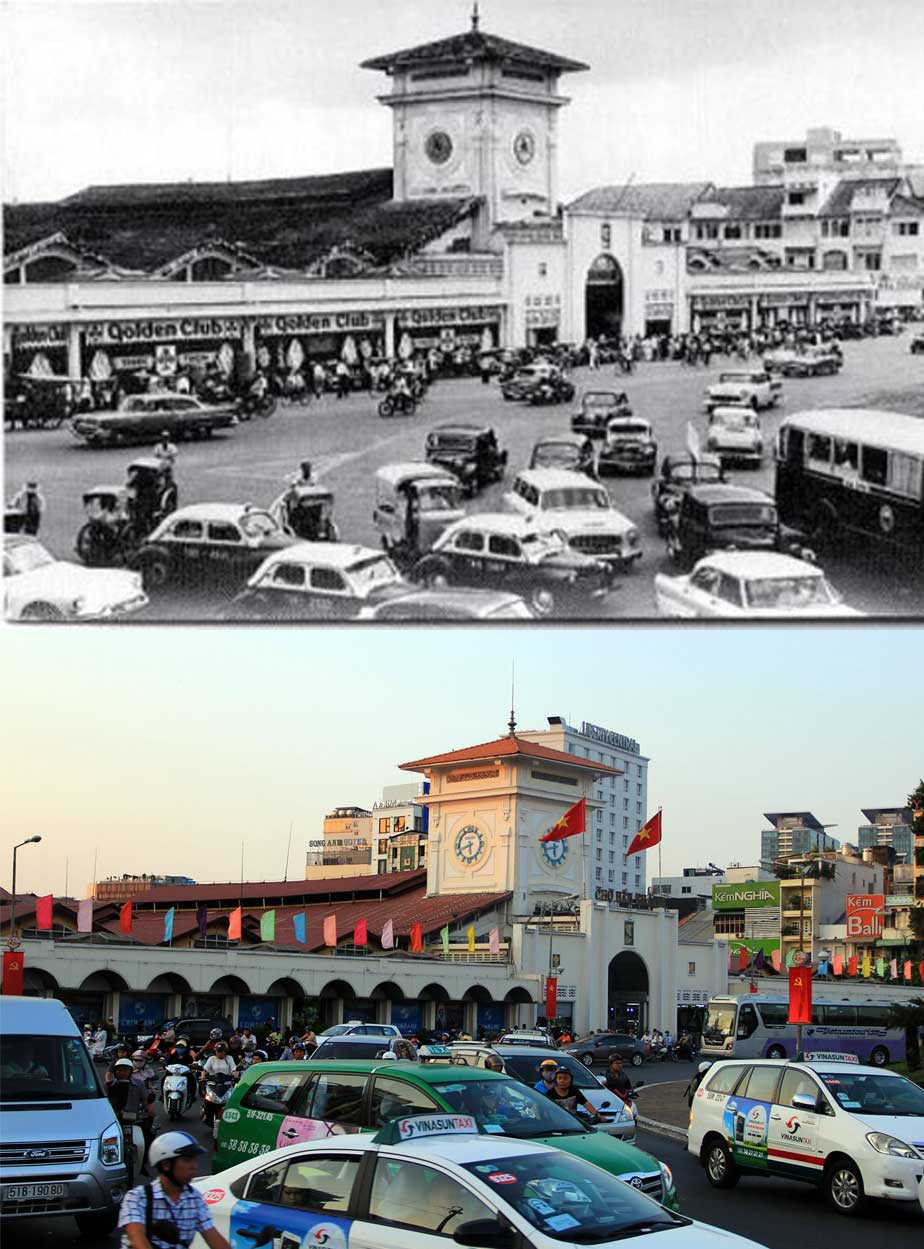
The Ben Thanh Market, which was located at the time by the Ben Nghe river, was redeveloped by the French in 1912 to its current location to be operational in 1914.
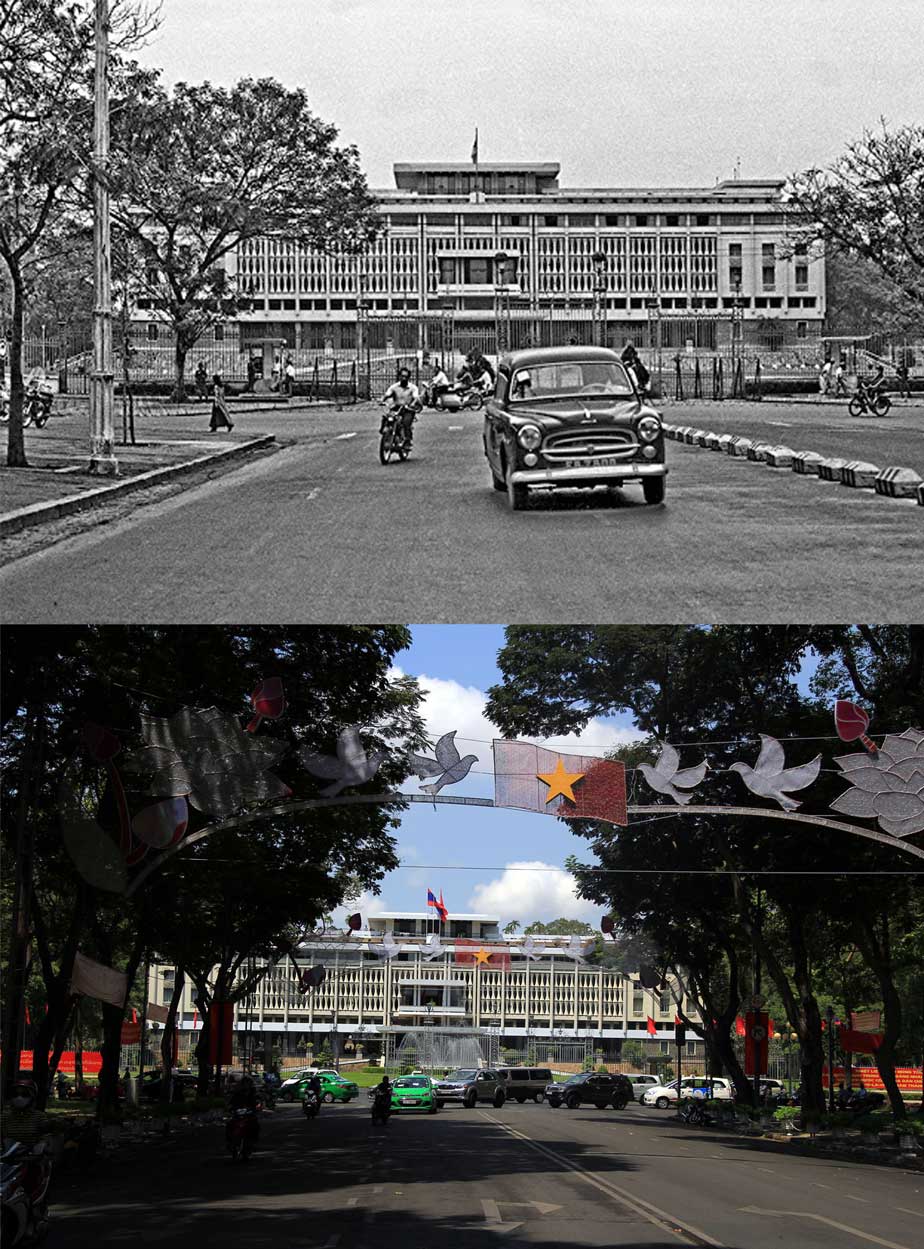
The Reunification Palace (former Norodom Palace), built in 1868, was renamed in 1955 to its current name.
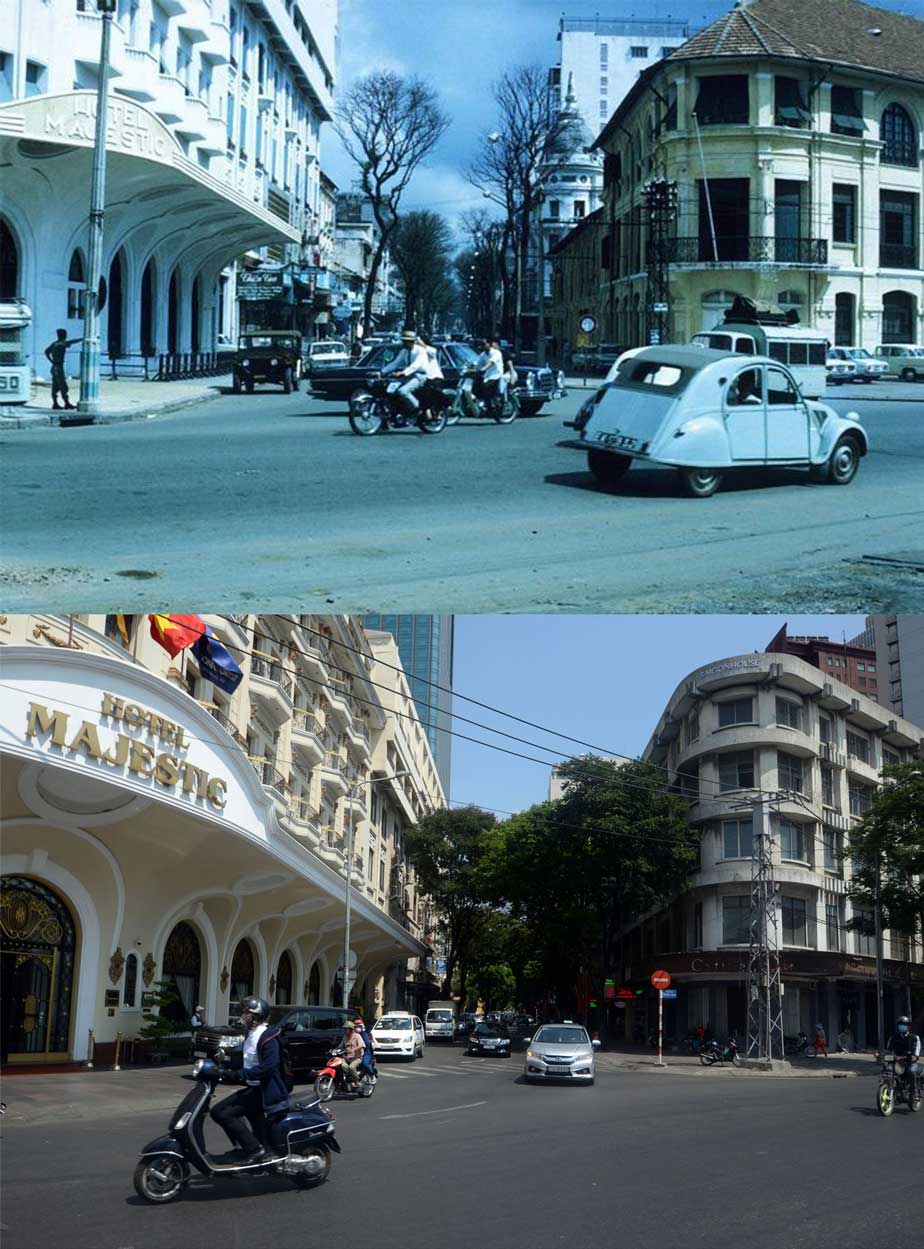
The Majestic Hotel, a luxurious emblem of Saigon at its peak, was built in 1925 in a French style.
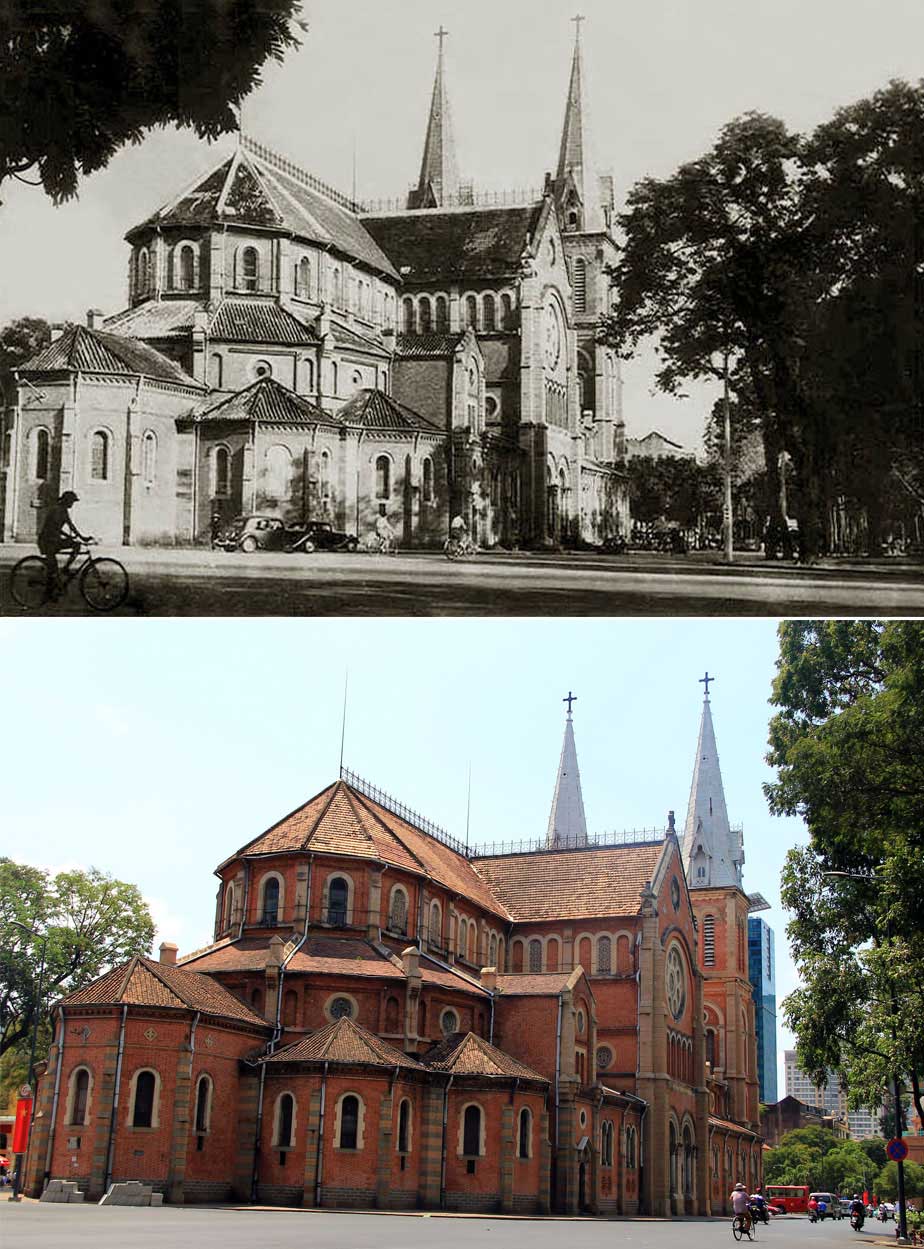
Notre-Dame Cathedral, the emblem of Saigon, built over 3 years (1877-1880), a miniature of the Notre-Dame de Paris Cathedral in Paris.
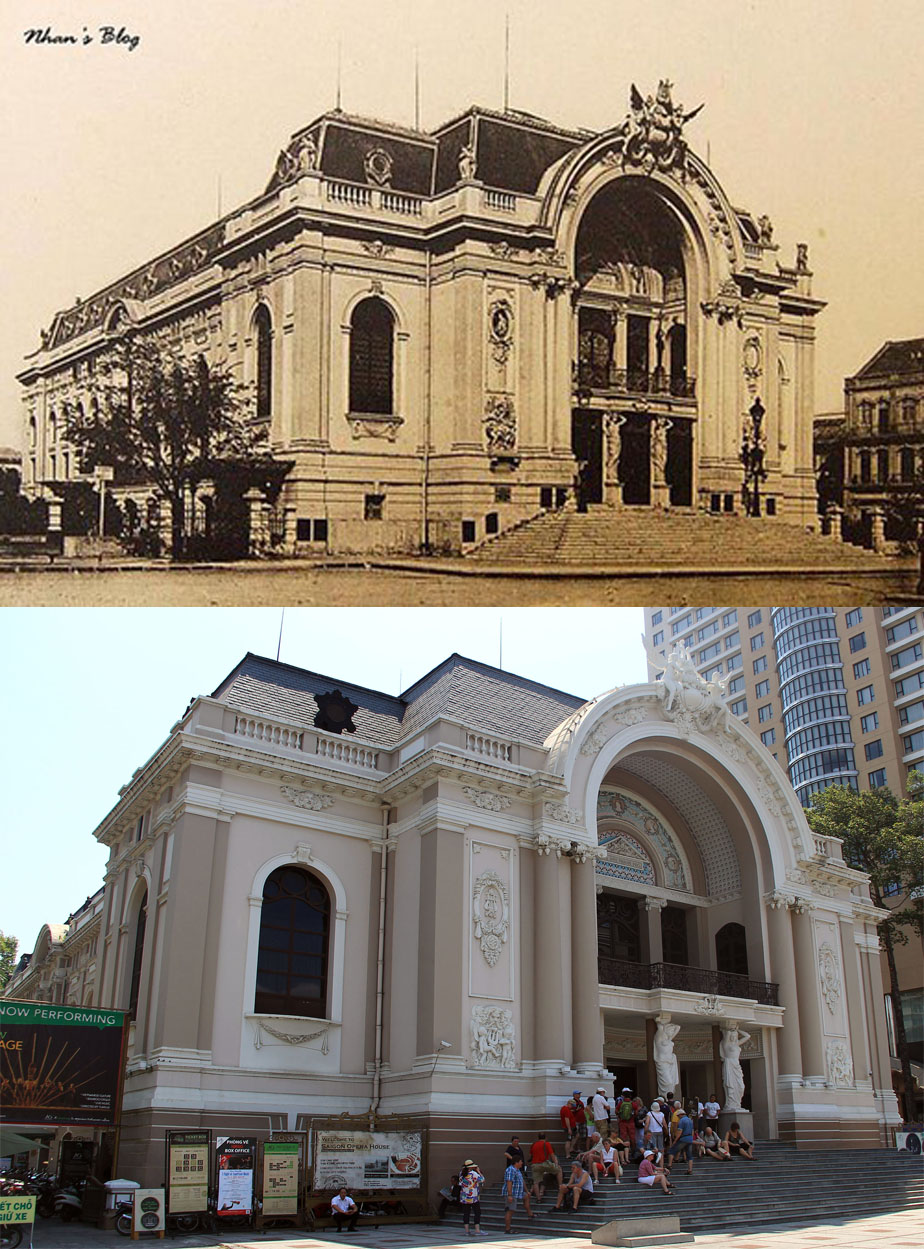
Saigon Opera House, built in 1900, the façade of which is inspired by the Petit Palais built the same year in Paris.
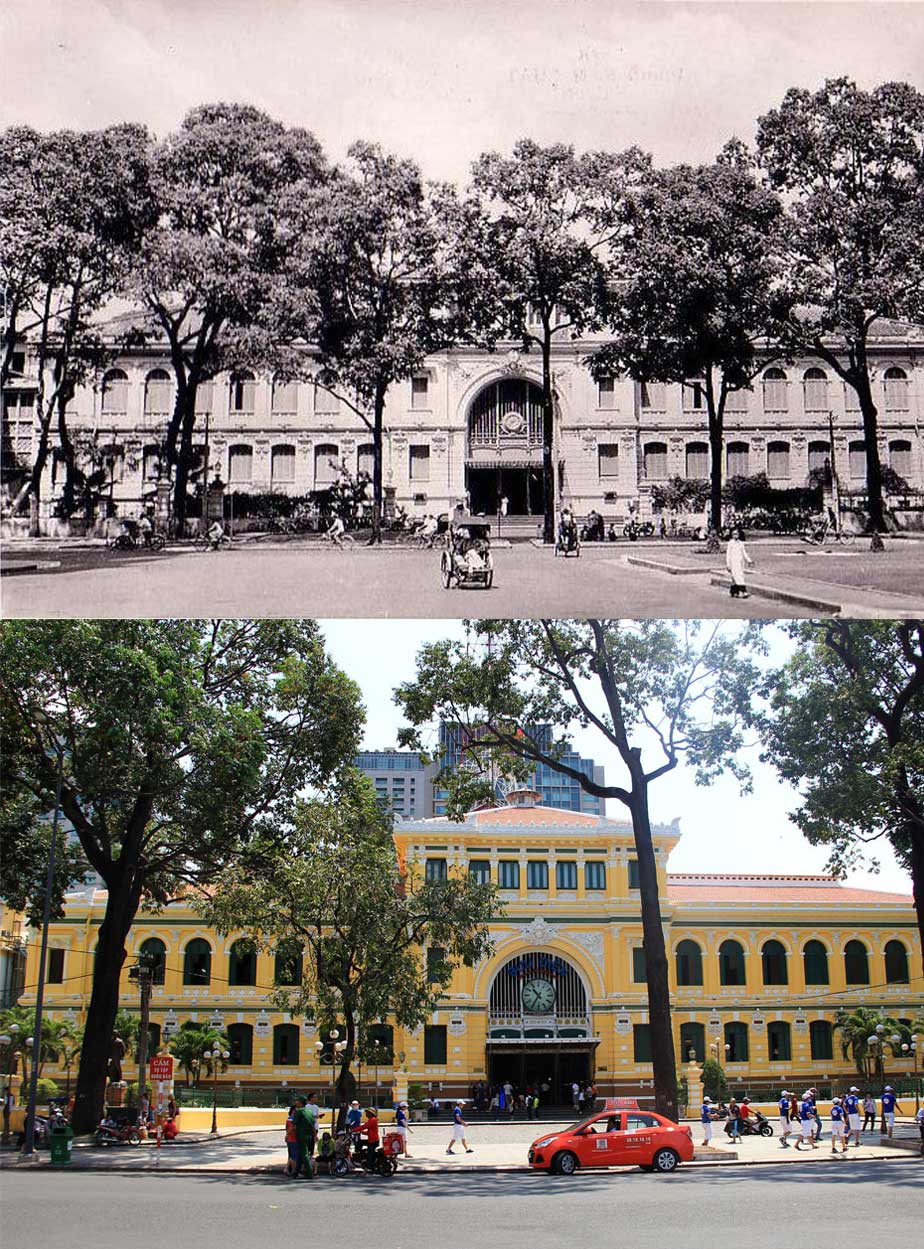
The Central Post Office, whose metal framework was designed by Gustave Eiffel, is another architectural symbol of Saigon, built between the years 1886 and 1891.
Related articles:
>> Vietnam tour 2023-2024: Where to go? Which itinerary? What to do? How many days?
>> What to do and what to visit in Ho Chi Minh City in 2 days?
>> Saigon and 5 good addresses for the Saigon breakfast
>> 5 little-known things on Dong Khoi Street in Saigon
>> Top 12+ best things to do in Ho Chi Minh City
 Español
Español Français
Français







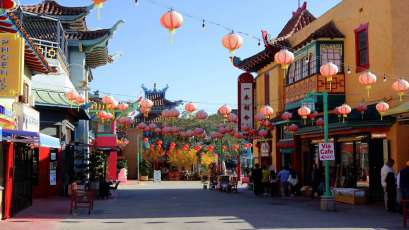
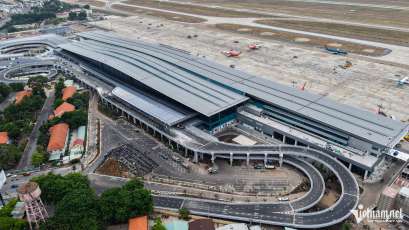
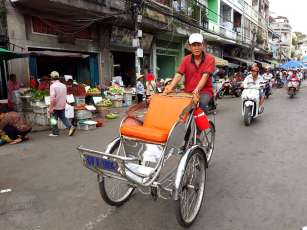
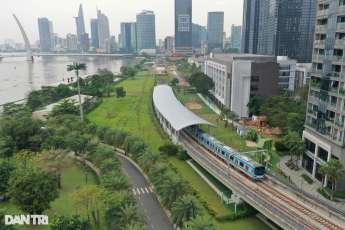

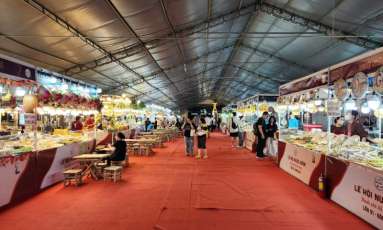







Morgane Ter Cock
on Dec 18, 2025HerbertPhomaMS
on Oct 19, 2025Lilyan Cuttler
on Oct 15, 2025Avenue17XC
on Sep 14, 2025Avenue18JL
on Jul 21, 2025